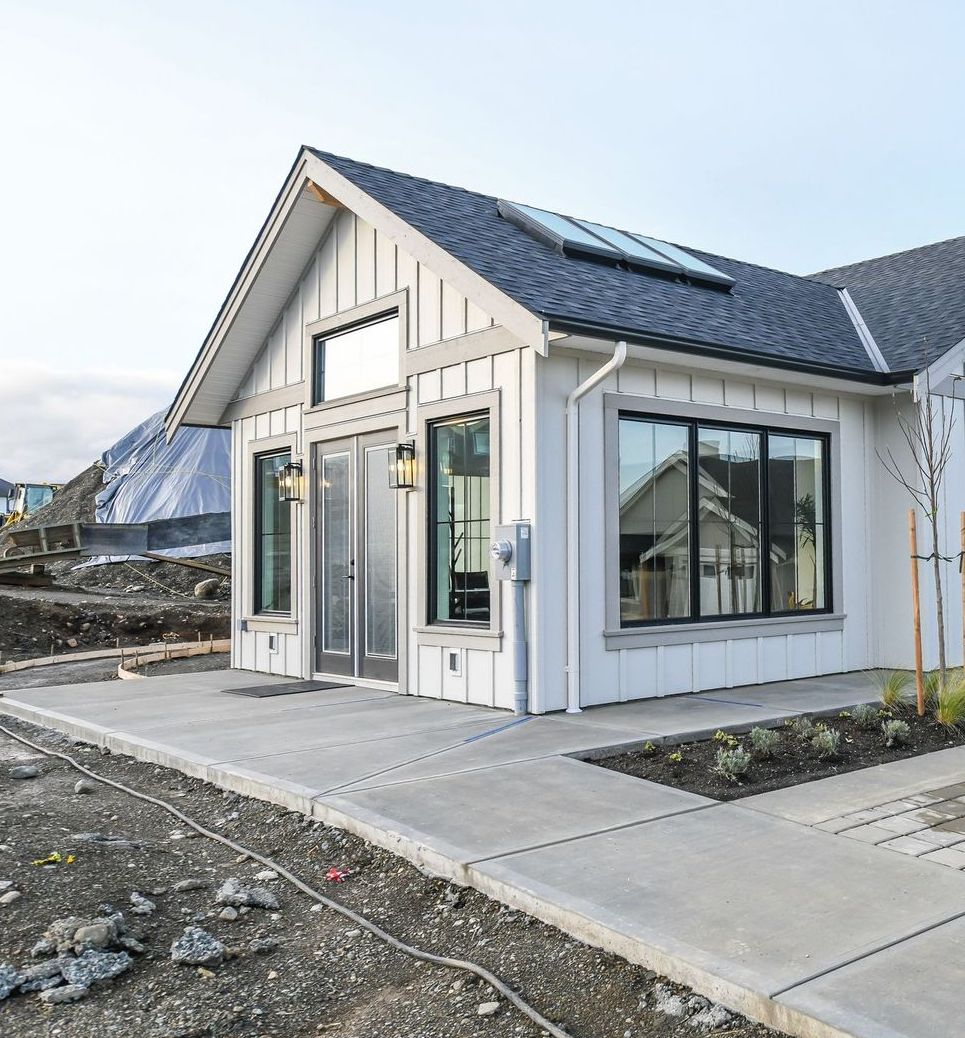What is a Blower Door Airtightness Test?
During a blower door airtightness test, our energy experts set up a large industrial fan in one of the exterior doors of the home and completely seal the door, ensuring that it is airtight. The home is then depressurized by the fan that sucks all of the air out, creating negative pressure or a vacuum effect. When the air leaves the home, air from the outside finds its way inside through any natural air leakage points, such as doors, fireplaces, around windows, attic hatches, wiring, light switches and receptacles.
This process allows us to walk around the home and identify all of these air leakage points. After the test is done, we will know your ACH (air changes per hour). The blower door airtightness test is the best tool for identifying where the air leakage spots are in your home.


For Existing Homes
Capital Home Energy offers blower door airtightness tests as part of our home energy evaluation service.
- Conducting this test is the best tool to identify all of drafty and leaky areas are in your home
- Draft-proofing is among the top cost-effective solutions that allows you to reduce your spending on utility bills
- Eliminate the cold spots in your home to improve comfort and liveability
- Government rebates are available for this service, which can significantly reduce the amount out of your pocket
For New Homes
Capital Home Energy performs a blower door airtightness test at the mid-construction point. This test is sometimes referred to as the pre-drywall blower door airtightness test. The test is performed after the windows, doors, and insulation have been installed to ensure newly installed elements of the home are up to airtightness standards. If a window or door is missing, we are able to seal up the opening before performing the test.
The next step is to go around every square inch of the building in order to identify all air leakage points and other potential deficiencies of the envelope, including windows, insulation, and air barriers. This test is important to complete as problem areas are very hard to fix once drywall has been installed.
This process also allows us to get a preliminary ACH (air changes per hour) number, and allows us to compare your project to benchmark standards and make the needed changes to reach your airtightness target before the home is completed. It is very important to find your where the home is leaking air before construction is completed as it allows us easier access to core components of the structure.
Click HERE to download the Mid construction prep sheet.
Click HERE to download the Mid construction prep sheet with Infrared thermal scan.
The benefits of a blower door airtightness test:
- Determine your ACH (air changes per hour)
- Ensures that you home meets the new BC Building Code ACH target, BC Energy Step Code
- Make sure your home meets or exceeds the airtightness standards (3.5 ACH) for the New Vancouver Building By-law
- Our energy experts are also able to conduct blower door airtightness tests on completed homes.
- Fore information on energy perfomance, visit our EnerGuide Ratings page.

Understanding your ACH (air changes per hour) air tightness score
- Average newly constructed home – 3.5 ACH
- Vancouver Building By-law requirement – 2.5 ACH
- ENERGY STAR® for hew homes requirement – 2.5 ACH
- Net Zero – 1.5 ACH
- BC Energy Step Code:
- Step 1 – N/A
- Step 2 – 3.0 ACH
- Step 3 – 2.5 ACH
- Step 4 – 1.5 ACH
- Step 5 – 1.0 ACH
- Passive House – 0.6 ACH
- For Passive house testing, please click here to learn more.
Whether it is a new construction or an existing home, a blower door airtightness test is a very cost-effective way to identify ways to lower your ACH (air changes per hour), save money on your utility bills, and increase the energy efficiency of your home!
Improved Home Comfort
Save Costs in Heating
Energy Bill Reduction up to 60%
Add Capital To Your Home.
Our team is dedicated to reducing the environmental impact of homes, through building science and energy efficiency! Before your project begins we will help you decide what is best for your home
